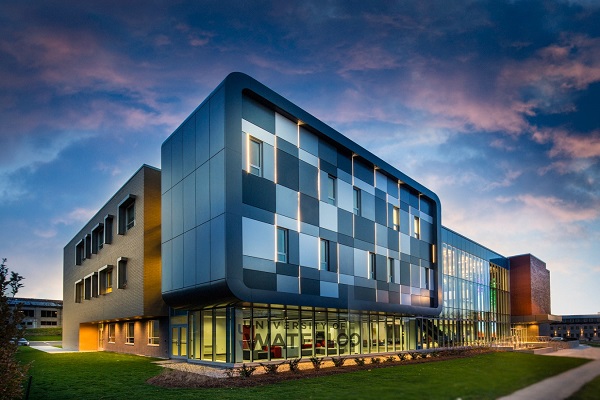University of Waterloo expert assists deliver on the promise of 5G to all communities
If you’ve walked through a shopping mall or watched a big game on TV lately, you’re sure to have seen an ad touting the benefits of 5G cellular networks. While the ads make claims about having the fastest network or making our lives better, most of us still have a lingering question — what, exactly, is 5G anyway?
Even before telecommunication providers began deploying the necessary hardware for 5G networks, the hype cycle was already moving full speed ahead. 5G was promoted as the gateway technology enabling next-generation experiences, from immersive virtual reality to life-saving remote surgeries.
Dr. Catherine Rosenberg is one of the world’s leading researchers in 5G and internet technologies and a professor in the Faculty of Engineering at the University of Waterloo. She says that while many of these experiences are still a few years away, the global rollout of 5G networks is starting to change many of the ways we live, work and play.
“5G lets you deliver much better capacity, but the problem is that when you deliver that much capacity, it becomes extremely complex to operate,” Rosenburg says. “The quest is to find the sweet spot for operating it efficiently and securely, and that’s what we’re working to help providers manage.”
What is 5G?
5G is the 5th generation mobile network designed to augment and eventually replace the 4G network technologies that most of us use today. It was introduced as a new set of standards in 2016, and the first deployment of a 5G network was in 2019. But 5G is more than simply a faster network — it has introduced significant improvements in how data is transmitted while creating room for the data needed for new experiences.
Like adding lanes to a highway, 5G adds bandwidth for additional devices and data on a carrier’s network. Unlike those new lanes, which only seem to add more cars, 5G networks intelligently prioritize traffic based on a specified user, device or service. There’s more room for everyone — and no one is stuck waiting in traffic.
The primary advantage of 5G, however, is what’s called low latency. This feature allows 5G networks to send a massive amount of data in a short amount of time. If you have a gamer in your household, you’ve probably heard them complain that they’re “lagging.” The lag comes from the network’s inability to handle the amount of data being transmitted. 5G’s low latency will eventually allow for data-intensive experiences like remote surgeries, where lagging could mean the difference between life and death.
How 5G can bring connectivity to everyone
So what does a 5G-enabled world look like? Rosenberg’s research looks at how the next generation of cellular networks impacts society. She says she is particularly interested in how they can be used to reduce the digital divides between communities with internet access and those without it.
The first divide relates to remote communities. Rosenberg says that the remote divide is difficult to solve because there is no business case for telecommunication providers to build the required infrastructure. “If it gets solved, it’s only because we want to do it as a society. The other digital divide is the rural digital divide, where there is some density, but much less than cities like Toronto, Kitchener or Montreal,” Rosenberg says. “People in rural areas get much less fixed broadband capacity than if they were in a big city — and we believe that 5G can help solve this problem.”
Fixed broadband refers to cable and fibre optic internet services. While they are available in major population centres, they are expensive to bring to rural communities. Using 5G networks, cellular providers are offering fixed wireless services to bridge this digital divide. These fixed wireless home internet services are on par with traditional fixed broadband services.
“Canada is extremely well covered in terms of cellular networks, but cellular towers in rural areas are often spread quite far from each other,” Rosenberg says. “The good news is that the infrastructure is there. We can deploy 5G equipment and not only offer mobile 5G to your phone but also fixed wireless access to homes to reduce the digital divide for everyone.”

